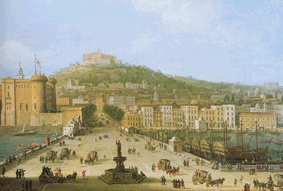Harbour waterfront: landscapes and potentialities of a con tended space
DOI:
https://doi.org/10.6092/2281-4574/2715Keywords:
Harbourscap, Public space, Multifunctional landscapeAbstract
The port is a strategic area of transition, where it is possible to perceive the territory-landscape and the urban front. However, the harbour waterfront mislaid its urban character, gradually becoming an high specialized “independent machine”, a sectorial infrastructure divided from the city: this phenomenon has created increasingly socio-economical marginalization. Within a double view, lengthwise and transverse, we can describe the port as a space closed to the city and as an unfathomable barrier for the transverse flows that previously connected the waterfront to the city. The paper examines the case study of Naples, where the port expansion continues to grow without any integration with other parts of the city, distorting its “urban area” role, establishing its independence and making urban system compatibility conditions even weaker. The functional and physical division increases the perception of the port as a barrier rather than a filter, turning the sense of these conditions aims at rethinking waterfront as a public space and as a landscape, where integration and specialization spaces become new open and accessible spatial devices. The project of a new public space between the sea and the hinterland could involve all these conflicting functions creating, with different strategies, a potential multifunctional landscape. In Naples as well, because the waterfront is still waiting to be re-connected with the story of the city itself.
Downloads

Downloads
Published
Issue
Section
License
Gli autori che pubblicano su questa rivista accettano le seguenti condizioni:- Gli autori mantengono i diritti sulla loro opera e cedono alla rivista il diritto di prima pubblicazione dell'opera, contemporaneamente licenziata sotto una Licenza Creative Commons - Attribuzione che permette ad altri di condividere l'opera indicando la paternità intellettuale e la prima pubblicazione su questa rivista.
- Gli autori possono aderire ad altri accordi di licenza non esclusiva per la distribuzione della versione dell'opera pubblicata (es. depositarla in un archivio istituzionale o pubblicarla in una monografia), a patto di indicare che la prima pubblicazione è avvenuta su questa rivista.
- Gli autori possono diffondere la loro opera online (es. in repository istituzionali o nel loro sito web) prima e durante il processo di submission, poiché può portare a scambi produttivi e aumentare le citazioni dell'opera pubblicata (Vedi The Effect of Open Access).

